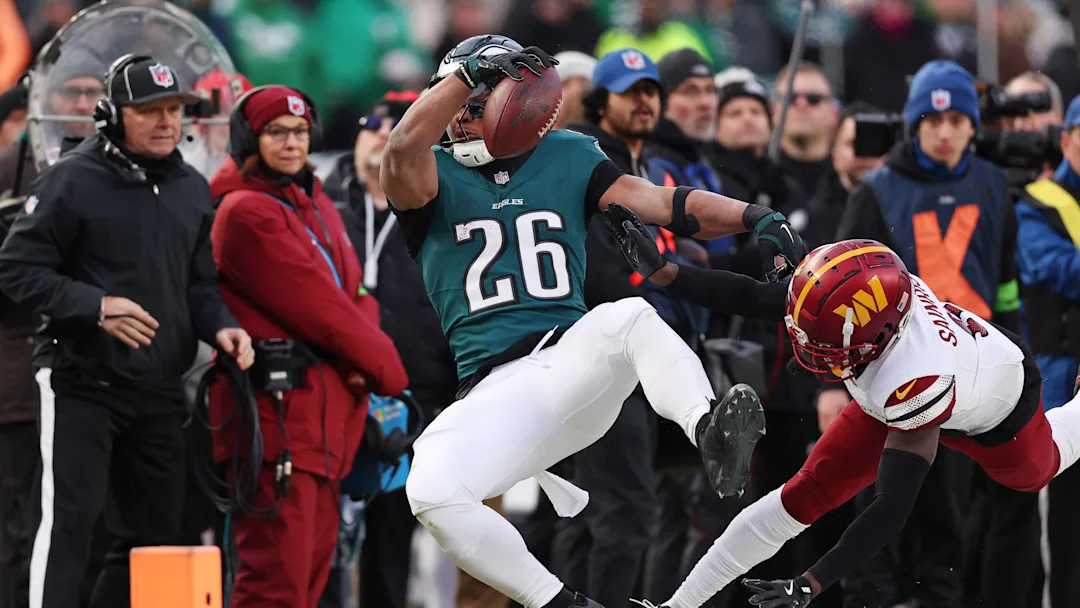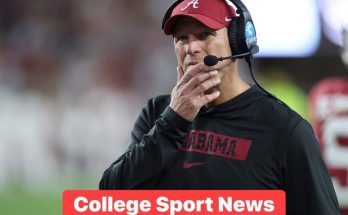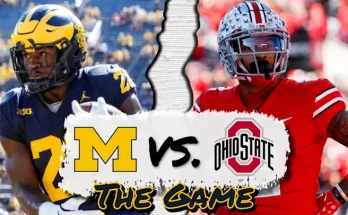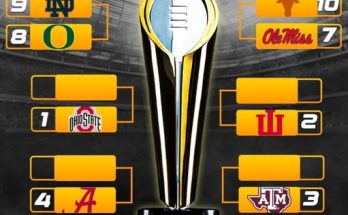Running Backs Are Flourishing in the Super Bowl, and the Chicago Bears Need to Pay Attention
In recent years, the NFL has seen a shift in how offenses are structured. High-powered passing games and explosive wide receivers often dominate the headlines, with teams looking for the next Patrick Mahomes or Justin Herbert to lead them to the Super Bowl. Yet, in the face of these trends, running backs have started to make a resounding comeback, showcasing their value and importance on the biggest stage of all—the Super Bowl.
The resurgence of running backs in Super Bowl matchups has become undeniable. In the past few seasons, several teams have relied on their running backs to carry the offense to victory in the NFL’s biggest game. Whether it’s the bruising, ground-and-pound style of play or the dual-threat running back capable of breaking long runs and catching passes out of the backfield, the importance of the running back position has been showcased in dramatic fashion. For teams like the Chicago Bears, the timing of this resurgence could not be more crucial.
The Bears, long recognized for their stellar defenses, have been searching for the right formula to become a true Super Bowl contender once again. A key component to that success will be their ability to effectively utilize their offensive assets—especially in the running game. As running backs have proven to be key figures in Super Bowl victories, the Bears need to pay close attention to how they approach the position in their rebuild. By studying recent championship teams and understanding the growing significance of the running back in the modern NFL, the Bears can craft a strategy to put them back into the Super Bowl mix.
A Changing NFL Landscape
The NFL has always been a league of trends. During the early 2000s, the running back position was a focal point for many offenses, with teams such as the Tennessee Titans, St. Louis Rams, and Dallas Cowboys benefiting from high-caliber running backs. Players like Eddie George, Marshall Faulk, and Emmitt Smith were integral to the success of their respective teams, establishing the importance of a dominant back in the offense.
However, as the NFL shifted toward a more pass-heavy style of play in the last decade, the focus gradually moved away from the run game. Quarterbacks began to take center stage, with the likes of Tom Brady, Drew Brees, and Aaron Rodgers becoming the face of the league. The explosion of high-powered passing offenses led to a diminishing role for running backs, and by the mid-2010s, teams began to devalue the position, especially in the draft.
Yet, the pendulum has started to swing back toward the running back in recent seasons. The Super Bowl champions from the last few years have highlighted the importance of having a dynamic and reliable running back. Whether it’s a dominant, workhorse back capable of taking over a game or a versatile playmaker who can both run the ball and contribute in the passing game, running backs are once again making a significant impact in the NFL’s biggest game.
Running Backs in Recent Super Bowls
The last five Super Bowl champions have all seen their running backs play crucial roles in securing victories, highlighting the importance of the position. Let’s take a look at how running backs have flourished in recent Super Bowl matchups:
1. Super Bowl LV: Tampa Bay Buccaneers (2020)
In Super Bowl LV, the Tampa Bay Buccaneers defeated the Kansas City Chiefs 31-9. While the story of the game was Tom Brady’s seventh championship, the Buccaneers’ running back duo of Leonard Fournette and Ronald Jones played a crucial role in the victory. Fournette, in particular, stood out, rushing for 89 yards and a touchdown while also catching a crucial touchdown pass. His performance was key in controlling the clock and keeping the Chiefs’ offense off the field. The Buccaneers’ ability to balance their offensive attack with a strong running game was pivotal in neutralizing the high-powered Chiefs’ offense.
2. Super Bowl LIV: Kansas City Chiefs (2019)
In the 2019 Super Bowl, the Kansas City Chiefs defeated the San Francisco 49ers 31-20, and while Patrick Mahomes was the star of the show, running back Damien Williams had an equally important impact. Williams rushed for 104 yards and a touchdown, and he also caught a crucial 38-yard touchdown pass. His versatility and ability to make big plays in critical moments made him one of the standout performers of the game. Williams’ contributions exemplified how a dual-threat running back can be a difference-maker in a high-stakes game like the Super Bowl.
3. Super Bowl LIII: New England Patriots (2018)
The New England Patriots’ victory over the Los Angeles Rams in Super Bowl LIII (13-3) was a defensive battle, but running back Sony Michel’s performance was critical to the Patriots’ success. Michel rushed for 94 yards and scored the game’s only touchdown, providing the Patriots with the offensive balance they needed to complement their stifling defense. Michel’s performance underscored how important it is for a team to have a reliable running back who can consistently gain yards and help manage the game clock.
4. Super Bowl LII: Philadelphia Eagles (2017)
In a thrilling Super Bowl LII, the Philadelphia Eagles defeated the New England Patriots 41-33. While the Eagles’ passing game, led by quarterback Nick Foles, was exceptional, running back LeGarrette Blount was also instrumental in the win. Blount, known for his physical running style, contributed 90 yards and a touchdown, helping the Eagles sustain drives and control the tempo of the game. Additionally, the Eagles’ running back committee, which included Jay Ajayi and Corey Clement, provided valuable contributions throughout the game. The committee approach proved that having multiple running backs with different skill sets can be effective in a Super Bowl-winning offense.
5. Super Bowl LI: New England Patriots (2016)
In Super Bowl LI, the Patriots staged a historic comeback to defeat the Atlanta Falcons 34-28 in overtime. While much of the attention was on Tom Brady’s record-breaking performance, running back James White was a crucial contributor. White had a Super Bowl-record 14 receptions for 110 yards and three touchdowns, including the game-winning score in overtime. White’s ability to contribute as both a runner and a receiver out of the backfield was instrumental in the Patriots’ offensive success and eventual victory.
Why the Chicago Bears Should Take Note
The Chicago Bears are at a crossroads in their franchise’s history. After years of struggling to find consistent offensive production, the Bears are now focused on rebuilding their offense around second-year quarterback Justin Fields. Fields has shown flashes of brilliance with his ability to both pass and run the football, and he represents the future of the franchise. However, for the Bears to truly compete at the highest level, they need more than just a talented quarterback—they need a balanced offense that can both pass and run the ball effectively.
This is where the importance of the running back position comes into play. While the Bears have had solid running backs in recent years, including David Montgomery and Tarik Cohen, they have yet to truly build an offense that can rely on the running game to control the clock and take pressure off their quarterback. A dynamic running back would not only give the Bears a potent ground attack but also provide Fields with a safety net in the passing game.
1. The Case for a Workhorse Back
One option the Bears should consider is adding a true workhorse running back who can carry the load in both the running and passing games. A player like this would provide the Bears with a consistent offensive weapon capable of chewing up clock and gaining critical yards in short-yardage situations. Given the success that teams like the Tampa Bay Buccaneers and Kansas City Chiefs have had with running backs who can contribute in multiple ways, a dual-threat back could be a game-changer for the Bears.
2. Utilizing the Running Back to Complement Fields
With Justin Fields’ unique skill set as a dual-threat quarterback, the Bears have the opportunity to build an offense that revolves around both the running back and quarterback working in tandem. Fields’ ability to make plays with his legs, combined with a strong running back, would make the Bears offense difficult to defend. A running back who can take the pressure off Fields, allowing him to focus on making plays in the passing game, would be invaluable.
3. The Value of Versatility
The modern NFL is all about versatility, and running backs who can catch passes out of the backfield are increasingly becoming a key part of successful offenses. The Bears need to find a back who can not only run the ball effectively but also contribute in the passing game. Whether it’s as a check-down option for Fields or as a receiver lined up in the slot, a versatile running back would add an additional layer of complexity to the Bears’ offense and give their quarterbacks more weapons to work with.
Conclusion
The NFL has witnessed a resurgence in the importance of the running back position, especially in the Super Bowl, where teams like the Tampa Bay Buccaneers, Kansas City Chiefs, and New England Patriots have all benefited from standout performances by their running backs. As the Chicago Bears look to rebuild their offense around Justin Fields, they must recognize the value of a dynamic, versatile running back who can contribute in multiple ways.
Whether through a workhorse back capable of controlling the tempo of a game or a dual-threat back who can provide both rushing and receiving production, the Bears must ensure that they invest in a running back who can take their offense to the next level. By doing so, they will not only strengthen their chances of competing in the NFC but also ensure that they have the tools necessary to contend for a Super Bowl in the years to come. The importance of running backs in today’s NFL is clear—if the Bears want to return to championship contention, they need to make the running back position a priority.



